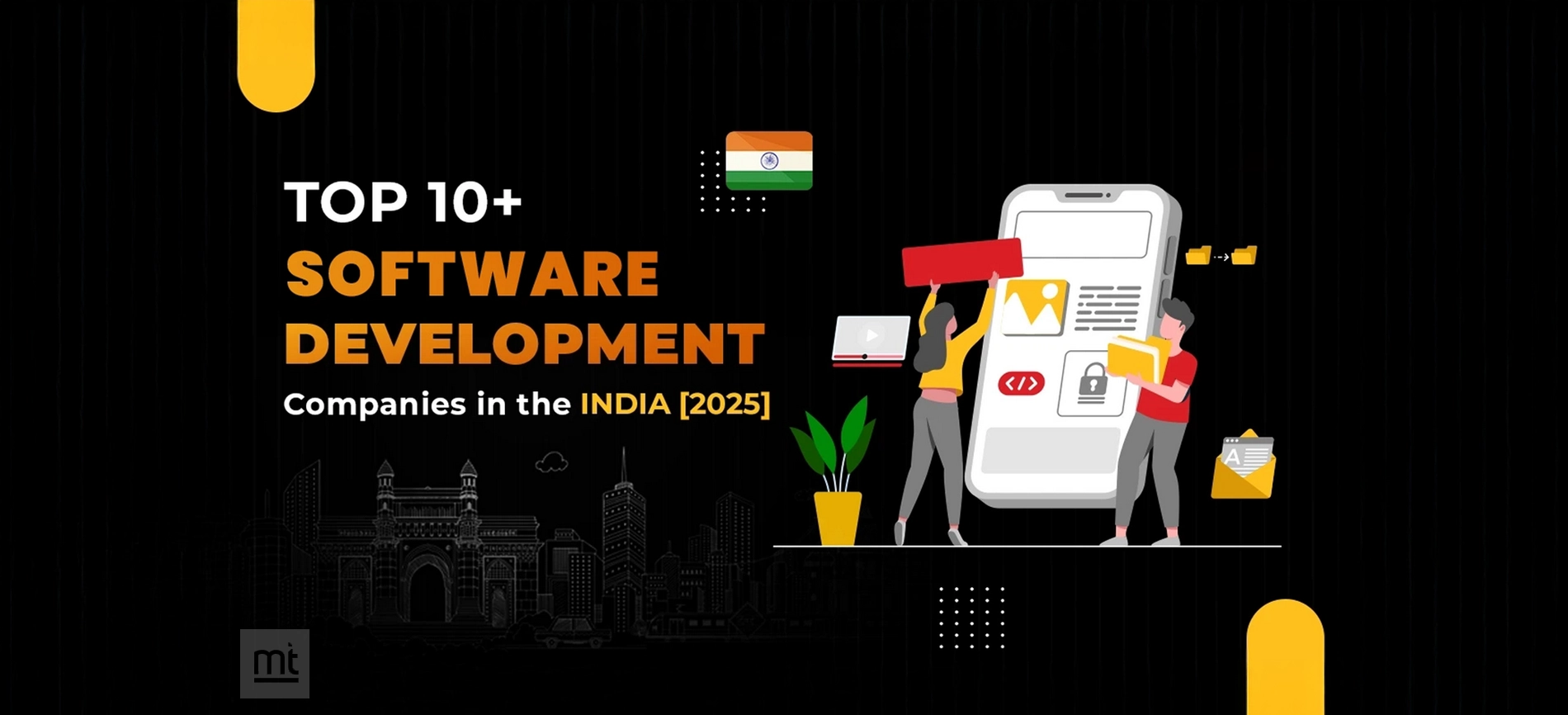Get Free Trial Week Developer Access, Try Before You Hire. Click Here to Claim Now
Introduction:
Did you know 90% of businesses will be cloud based in 2025? Or that 80% of IT tasks will be automated by AI? These are just a few eye-opening Software Statistics that are changing the software development landscape.
Today, the software development industry is booming like never before, driven by digital transformation, AI, and the need for smarter, faster tech. All businesses are investing in software to streamline, engage with customers, and get ahead. As opportunities grow, so do the challenges—talent shortages, rising costs, and the need to deliver quality fast. Knowing the latest Software Development Trends and data helps you navigate this. In this blog, we’ve researched the latest and greatest software stats for 2025—market size, technologies, programming languages, developer trends, and more.
Whether you’re a decision maker or developer, these Software Development Market Trends will help you stay ahead.
Key Software Development Statistics for 2025
1. According to Statista, the worldwide software development market will reach upto $741 billion by 2025.
2. The revenue in the software industry is expected to grow 4.87% from 2025 to 2029, which is possibly about $896 billion by 2029.
3. According to Gartner, by 2025, 70% of new apps are likely to be built using low-code or no-code technologies.
4. Enterprise software spending will reach $315 billion by 2025, as companies invest more in Software Development Tools that promote integration and long-term value.
5. 85 %+ of enterprises will use cloud computing by 2025, and around 95% of new digital workloads will occur in the cloud.
6. 83% of enterprises describe AI as a strategic priority in their business plans by the year 2025.
7. Research has found that 96% of today's modern applications include at least one open-source component. This shows the importance of open-source software development.
8. With the growing digital transformation, software developers are in demand. The global developer population is expected to cross 28.7 million in upcoming years by 2025, reflecting the rising demand for tech talent amid digital transformation efforts.
Software Development Statistics and Growth Metrics
Software development is a huge industry that is constantly growing with the evolving user needs and digital transformation. The figures below show the growth metrics related to software development in 2025.
9. According to the Bureau of Labour Research, it has been found that the employment in software development will increase upto 25% from 2022- 2032.
10. The SaaS (Software as a Service) space is booming, having been forecasted by GlobeNewswire to reach an estimated worth of $1.251 billion by 2034.
11. 80% of US and European outsourcing firms see India as their No.1 offshoring destination.
12. Research has also found that 60% of global outsourcing services are related to software development.
13. According to the Deloitte survey, 76% of IT functions are outsourced, like coding, QA, and other tasks.
14. According to Salesforce's report, businesses using advanced technologies like cloud computing, big data, and data analytics can experience a 53% growth in revenue.
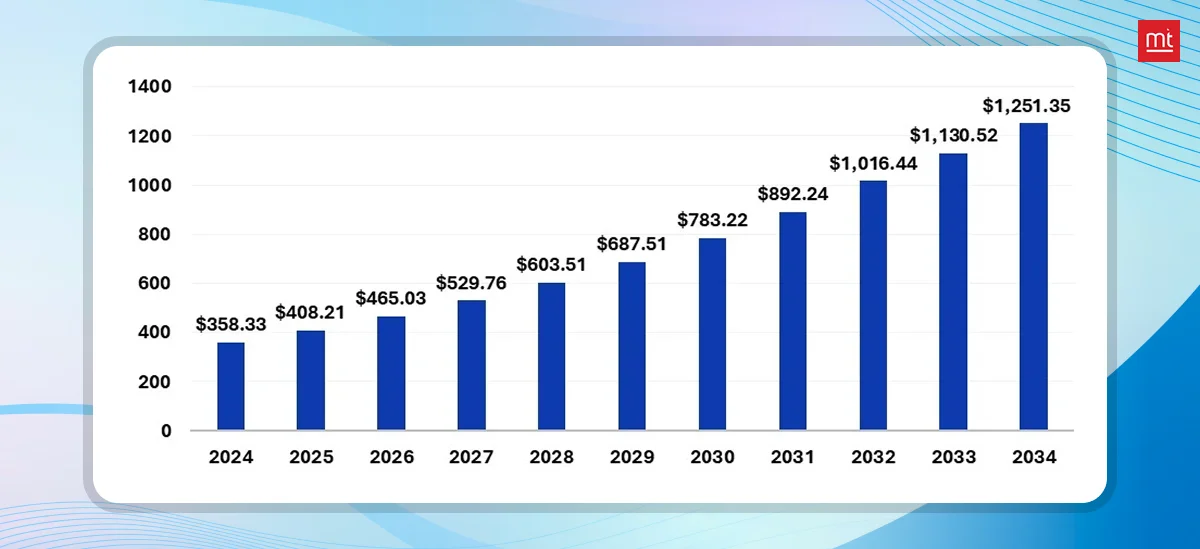
Country-wise Software Development Stats in 2025 and Beyond by GrandView Research
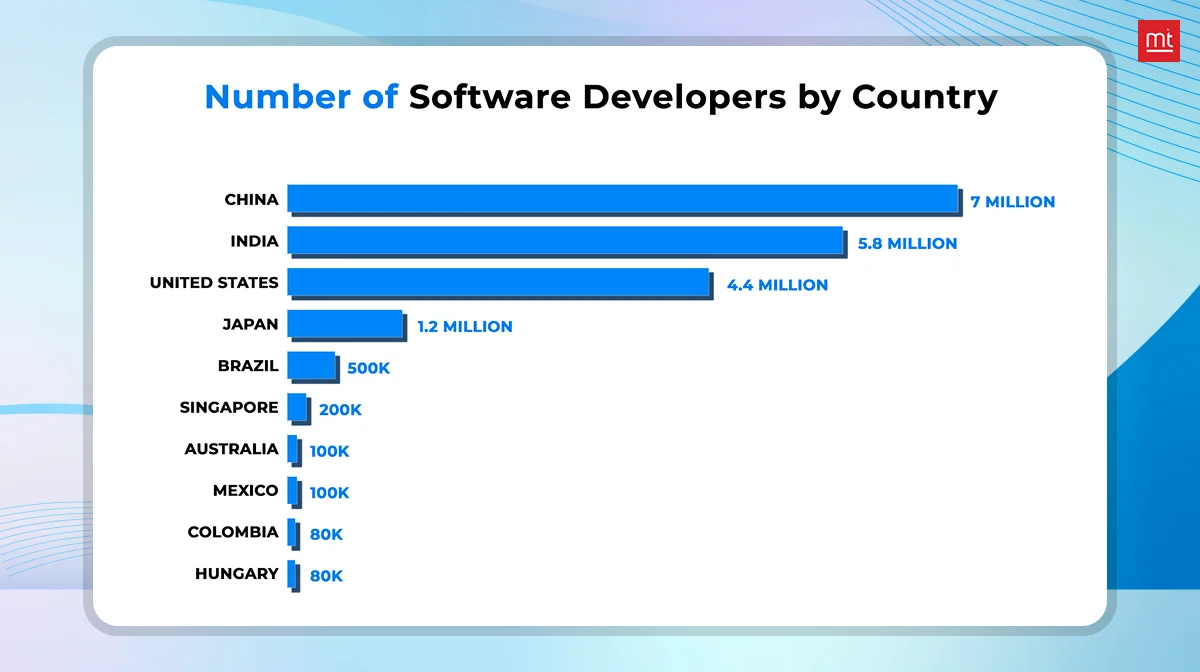
15. Do you know there are over 5.7 million developers in Europe who are working for some of the big software companies?
16. The U.S is the top hub of software development. Software engineers in the US typically earn around $124,200 annually pay.
17. A Global Statista survey found that 80% of software developers are male, while 19% of developers are female.
18. 56.41% of software developers in Germany are full-time software engineers, and 10.92% of people come under other fields(freelance, etc).
19. The US dominates the software development market by covering 33% of the tech market.
20. Germany holds 6.72% of the global software developer population.
21. The Asia Pacific covers over 23% of the global software market. And is expected to grow at a 7.3% CAGR from 2024 to 2031.
22. There is a huge demand of software solutions in China as it has over 50% of the e-commerce market.
23. China has become the global hub of software developers with 7 million software developers.
Software Development Technology Wise Statistics
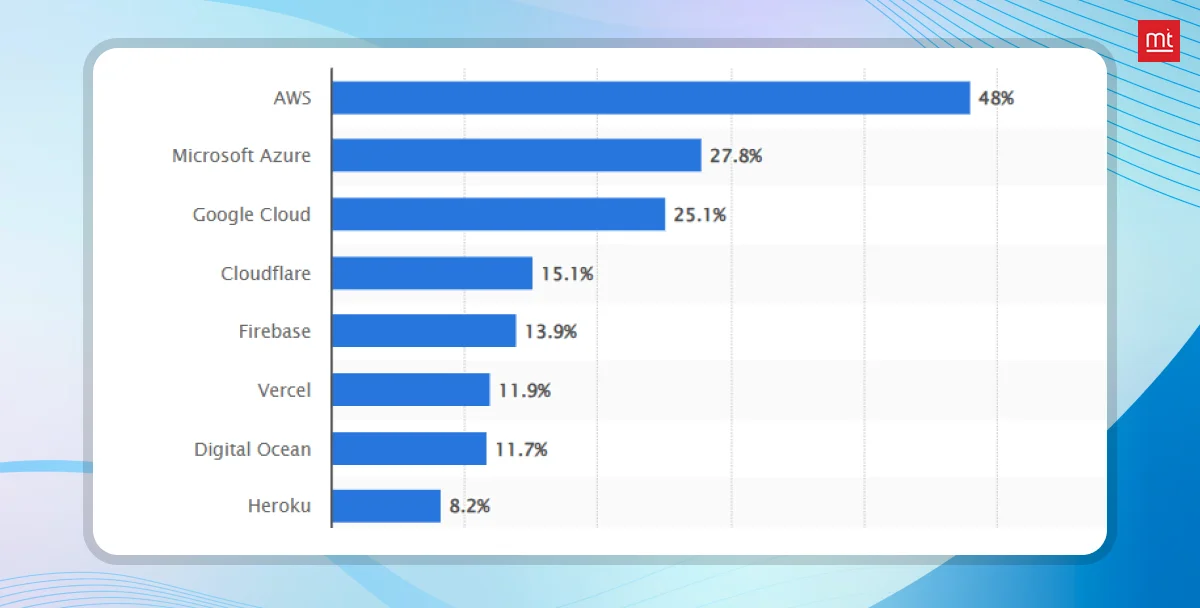
24. Over 90% of businesses depend on cloud technology like AWS and Azure for software development.
25. 65.82% of industry professionals use JavaScript as a go-to technology for various IT projects.
26. Statista research says that global revenue for enterprise software development will reach up to 662 billion dollars by 2028.
27. Over 40% of companies are using data analytics to get useful insights for their business.
28. Python ranks as the top programming language with 9 million active developers, of which 51% are already using it for software projects.
29. Global spending on cloud services is projected to reach 2.9 trillion US dollars in 2030.
30. According to Statista reports, more than 60% of company data is now stored in the cloud.
31. Over 40% of developers are using AI chatbots for coding and get answers.
32. Over 84% of developers use tools like GitHub, Bitbucket, and GitLab for their software projects.
Software Development Stats As Per Development Methodologies and Practices
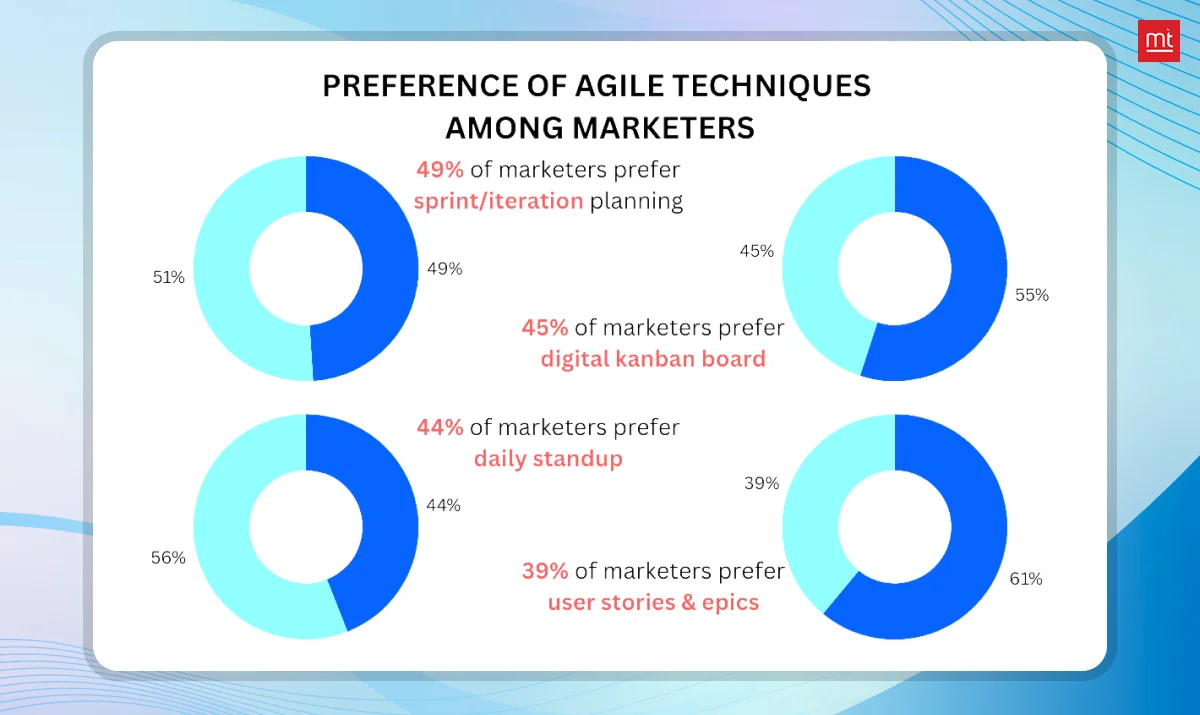
33. 86% of marketers prefer to move to agile methodology.
34. 87% of kanban adopters noticed the kanban method was more effective.
35. According to 78% of government executives says, using agile and DevOps gives positive results in business.
36. 3 out of 5 agile practitioners experience better alignment and satisfaction with agile.
37. 80% of tasks in DevOps will be done through automation by 2025.
38. 68% of businesses have adopted agile methods in their software development.
39. There are many methodologies introduced, but 22% of legacy systems still prefer to use the waterfall technique for their software development.
Software Development Programming Languages-based Statistics
40. 62.3% of developers worldwide prefer JavaScript when it is about full-stack development projects.
41. Java is a top programming language used by 90% of the big companies for mobile applications and enterprise development.
42. A recent survey says 87% of developers find Rust the most suitable programming language for softwares due to safety and reliable code.
43. Stackoverflow survey finds that 59% of student developers prefer Python to use while 52% of professionals choose SQL over Python.
44. 18.2% of developers globally love using PHP for web-based and server-side scripting projects.
45. GitHub is the choice of over 100 million developers for version control and hosting code repositories.
46. By 2025, over 75 billion IOT devices are expected to be used globally.
Software Developer Demographic Statistics
47. If we look at the demographics of software developers, there are over 77.1% men and 22.3% women.
48. The average of age of software developers is within 39 years.
49. The average salary of male software developers is $145,735, while females earn $120,362.
50. Software developer jobs are expected to grow by 25.7% in 10 years.
51. According to USA data research, 93.2% of software developers are non-Hispanic, while 6.77% are Hispanic.
52. Over 27-30% of software developers do not officially hold a computer engineering degree.
53. While 25% of experts have a degree in computer science or computer engineering.
54. 20% of world’s software developers are from Western Europe, Israel, and North America.
55. 50% of developers work and study, while 36.2% are full-time professionals.
56. The US and Western Europe cover over 82% of the world’s cloud computing.
57. A recent survey finds that 50% of software developers’ experience is up to 6 years or more.
58. According to GoodFirms and Clutch, the majority of application developers come from New York and Atlanta.
Time and Cost of Software Development Statistics
59. According to Forbes, it takes 3 to 6 months of time to complete the software development project.
60. A normal software development spends over 63% money in designing and building software.
61. An average small software project costs around $4,800 to $25,600 in 2025.
62. The cost of QA and testing has increased by up to 26% with the growing digital needs.
63. 32.23% of companies outsource their software projects rather than hiring in-house in order to cut down the cost.
64. Hiring a new software engineer costs up to 25% of the specialist's base salary.
65. An experienced software developer typically earns around $107,790 per year.
66. Every year, the software maintenance cost is around 15-20% of the actual software development cost.
67. Recent research finds that using test automation for software testing can reduce cost by 20%.
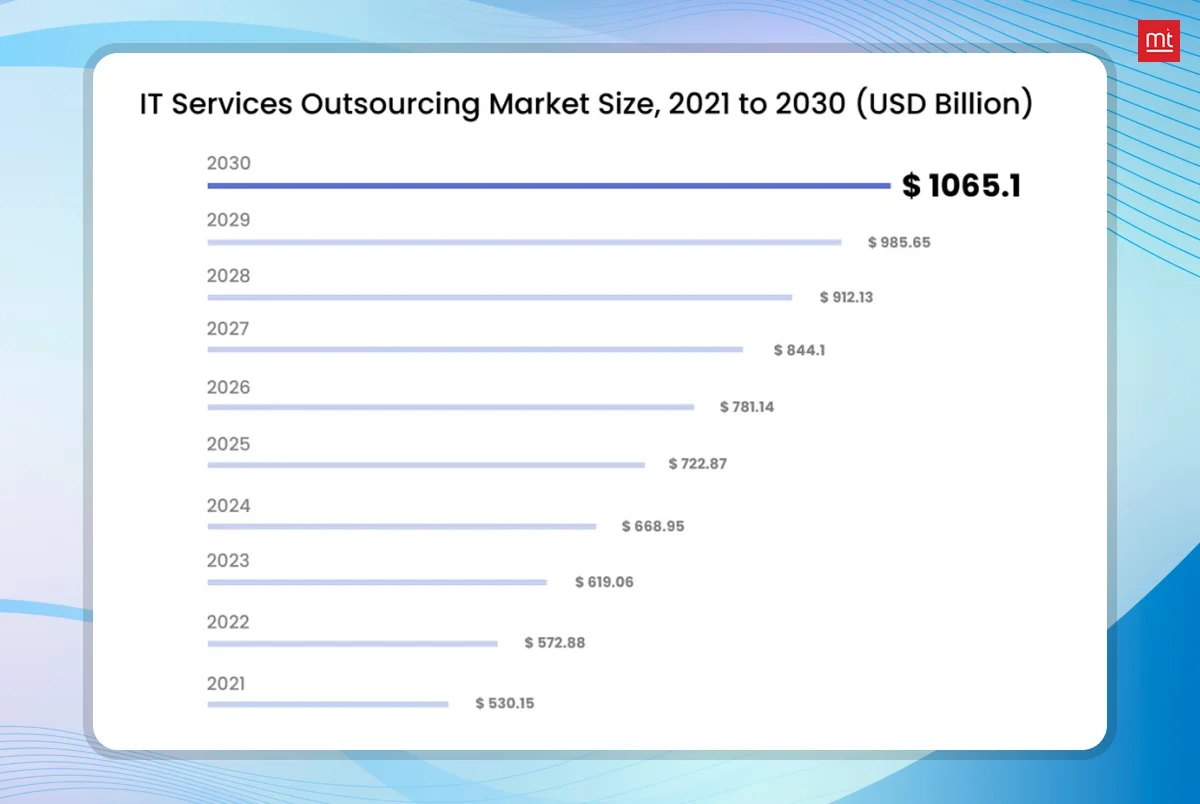
Industry-Specific Software Development Statistics
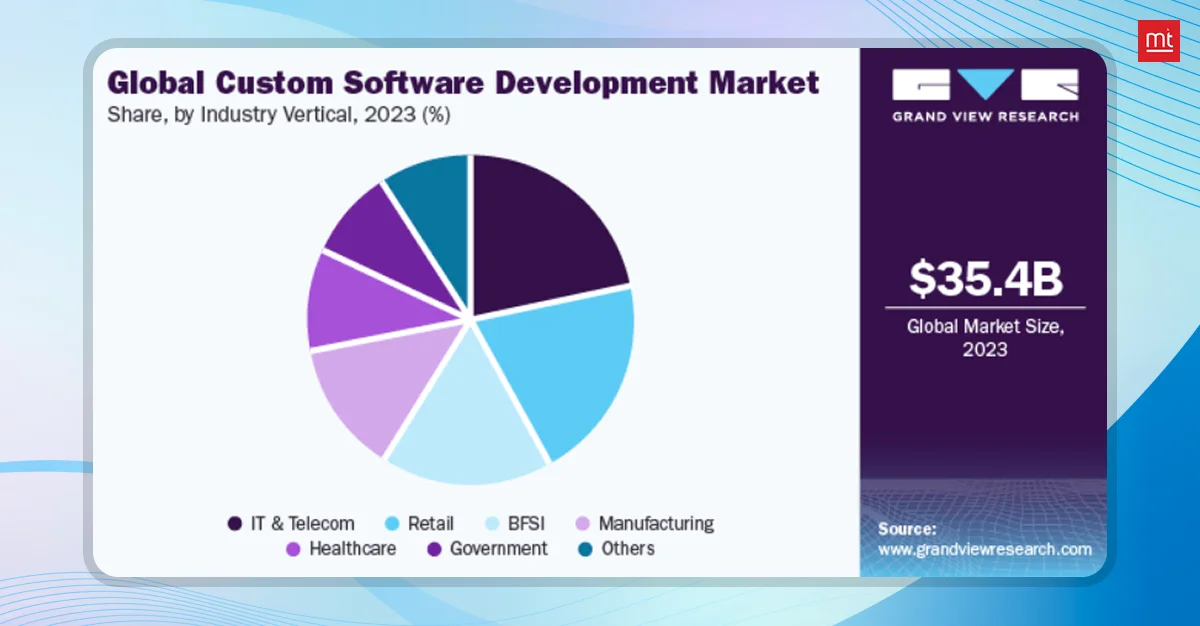
68. By 2035, the manufacturing sector revenue is expected to gain $3.78 trillion through AI.
69. Smart hospital market value is expected to rise up to 83 billion U.S. dollars by 2026.
70. AI can help reduce 90% of failures in the clinical drug development industry.
71. The global healthcare market is likely to reach USD 1,628.13 billion by 2035.
72. With the increase of digital payments, global fintech market is expected to reach $1583.05 billion by 2033.
73. By the end of 2025, 85% of customer operations in retail software will be handled by AI.
74. 80% of online retailers' software solutions will be using Personalization by 2025.
75. OTT is the largest market, which is expected to reach 4.9bn users by 2029.
76. Gartner research says, 40% of supply chains can be optimized using AI/ML.
77. By 2030, the automotive software market is likely to reach 2,884.7 million.
78. The blockchain market is expected to grow by 90.1% each year from 2025 to 2030.
79. The U.S. leads the e-commerce software market in 2025 with $4.54 billion in revenue.
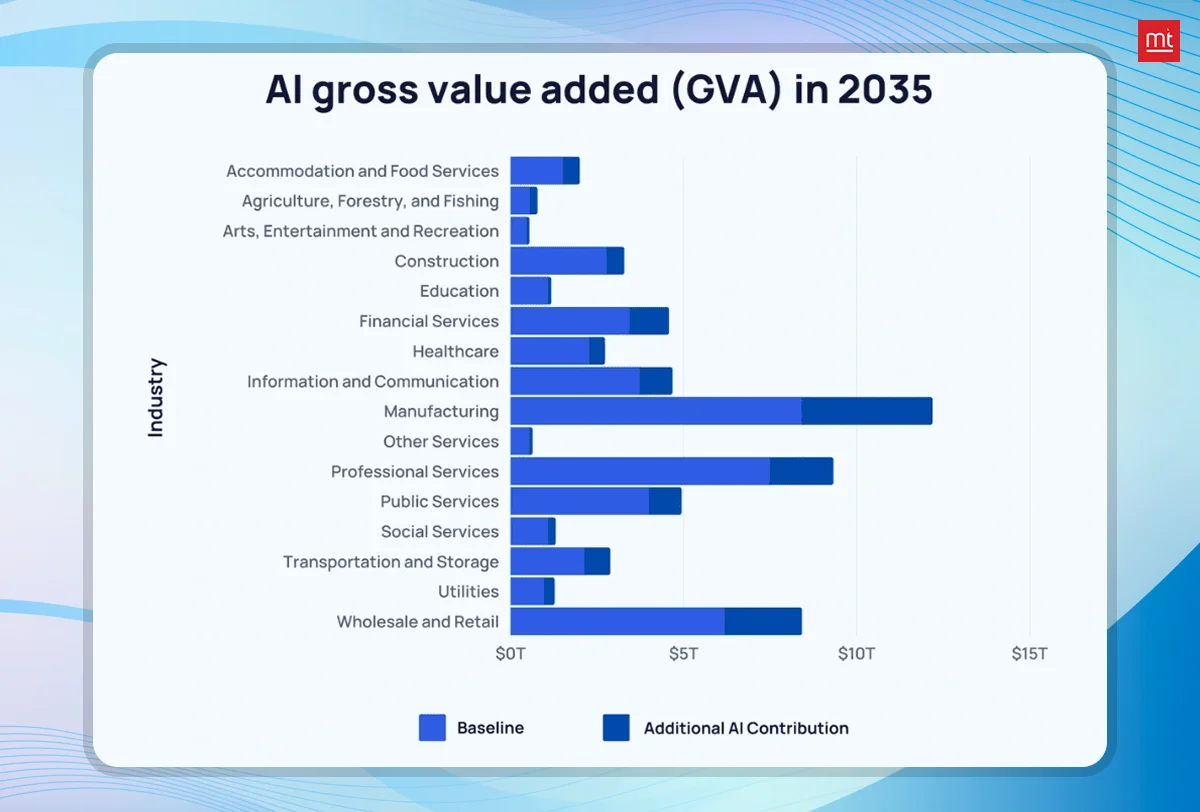
Statistics About Software Development Challenges
80. 25% of software projectsgets failed or deliver bad results because of poor management.
81. 40.7% of developers face a challenge in integrating AI into the development process.
82. Forbes says that the shortage of software developers will grow up to 4 million by 2025.
83. 70% of software projects end up costing more.
84. 80% of software issues arise during the development step, which can extend the time to develop software.
85. According to recent research, it's found that 49% of developers struggle to meet sudden technology or strategy changes.
86. Hutte data reveals that 55% of project delays are due to last-minute unexpected changes.
87. Over 57% of developers say they face development challenges due to unclear software requirements.
88. A recent report by Harness finds that 70% of developers had to spend extra time to debug AI-generated code.
89. Compliance and intellectual property concerns are increasing, as 52% of developers use tools that are not approved by the IT industry.
90. 40% of experts face a delay in timely software release because of the wrong testing environment.
91. 63% of software engineers feel, AI and machine learning increase the complexity of software development.
92. 20% of companies don't even have an idea about the cloud cost and its use for different aspects in software projects.
Software Development Stats: Future Possibilities
93. AR is the growing trend in enterprise development, with 56.5% active projects.
94. CI/CD tools usage will grow, currently, 32% of developers use self-hosted Azure Pipelines, and 31.9% use GitLab.
95. Generative AI will cause more demand for AI software engineers in the upcoming years.
96. AI and machine learning jobs will grow by up to 40% in the next five years.
97. AI is likely to replace software developers by 2040-predicts the US Department of Energy’s Oak Ridge.
98. The global IT software outsourcing market is expected to grow to $410.2 billion by 2027.
99. The software development industry is likely to face a shortage of talented employees, resulting in 85.2 million unfilled jobs by 2030.
100. The cloud service market is constantly growing, it grew up to 1 million in 2025 and is likely to reach US$ 2.9 trillion by 2030.
101. Business worldwide can lose upto 8.5 trillion dollar revenue due to shortage of talented software engineers.
102. The future prediction of Gartner says, by the end of 2025, CI/CD pipelines will be used by over 70% of enterprise businesses.
Conclusion
Hope you found the above software stats interesting and useful to know what's the current status of the software development industry. In 2025, software development is no longer about writing code – it’s about impact, problem solving, and change. With cloud platforms, AI, DevOps, and a remote workforce, the developers and tech teams need to evolve alongside the tools they use. By reading the latest stats and insights, you’ll get a better understanding of where the industry is going. These trends will help you hone your tech stack, choose better frameworks, and find growth areas for your business or career.
Knowing the current market data isn’t just nice to have – it’s necessary to be competitive in a global tech world.
FAQs Related to Software Development Statistics
Q1. What Are the Biggest Challenges in Software Development Today?
Ans: The biggest challenges in the software industry are balancing the user needs with the rapidly changing technologies. Other than this, managing complex software needs, security, and meeting user expectations are the common challenges software industries often face.
Q2. What Is the Success Rate of Software Development Projects?
Ans: The success rate of software development projects changes every year because it depends on client satisfaction, whether the project is delivered on time, on budget, and software quality. Studies show only 25-30% are fully successful on time, on budget, meeting requirements. 50-70% fail completely because of some common issues like scope creep, unclear goals, and poor communication.
Q3. How Is Ai Impacting Software Development?
Ans: AI is making software development easier than previous how it used to be by automating tasks like code generation, bug detection, and testing. Tools like GitHub Copilot help developers write code faster, AI AI-powered analytics help with decision making.
This increases overall productivity. But developers need to debug the code if it's AI-generated. Otherwise, AI is helpful for automating time-consuming tasks.
Q4. What Are the Most Common Reasons Software Projects Fail?
Ans: Software projects fail due to unclear requirements, no user involvement, poor project management, unrealistic timelines, and inadequate testing. Communication breakdown between teams and stakeholders also matters. Technical issues like integration and changing technology can delay progress, so early planning, clear goals, and agile methods are key to success.
Q5. What Is the Average Salary of a Software Developer in 2025?
Ans: As of 2025, the average salary of a software developer in the US is around $95,000 annually. year. Salaries vary by experience, location, and specialization; senior developers and those with AI, cloud, or cybersecurity skills earn more. Developers in major tech hubs get paid more.
Entry-level software engineers earn up to $80,000, while more experienced ones can earn $137,234 or even higher.
Q6. How Long Does It Take to Develop Custom Software?
Ans: Custom software takes 4 to 12 months to develop, depending on complexity, features, and team size. Small apps take a few months, enterprise-level systems take over a year. The timeline includes requirement gathering, design, development, testing, and deployment. Agile can help speed up delivery.
If you want to know Software Development Costs and time estimate for your software idea, then reach us or schedule a free call today.
Subscribe to Our Newsletter!
Join us to stay updated with our latest blog updates, marketing tips, service tips, trends, news and announcements!



